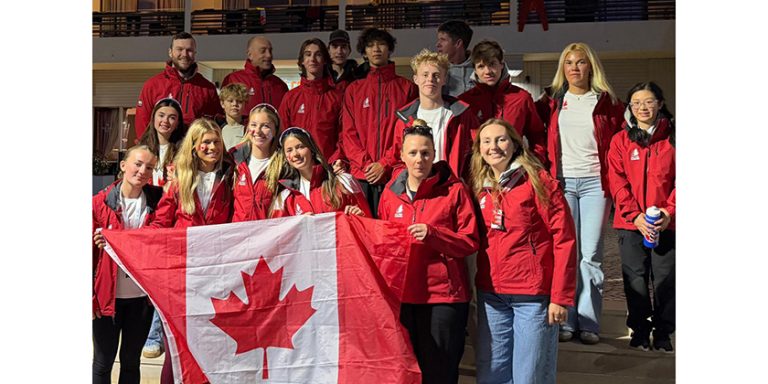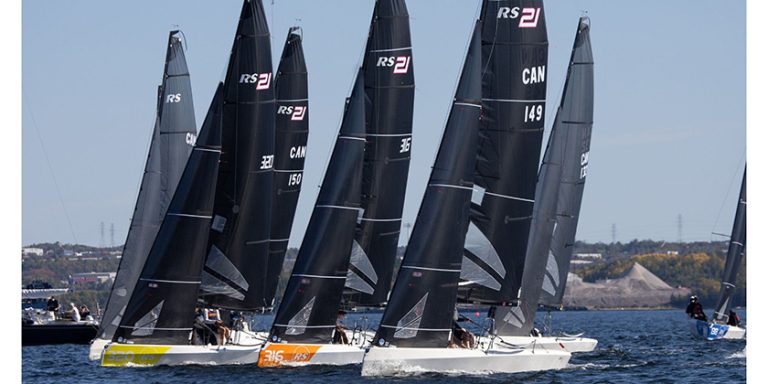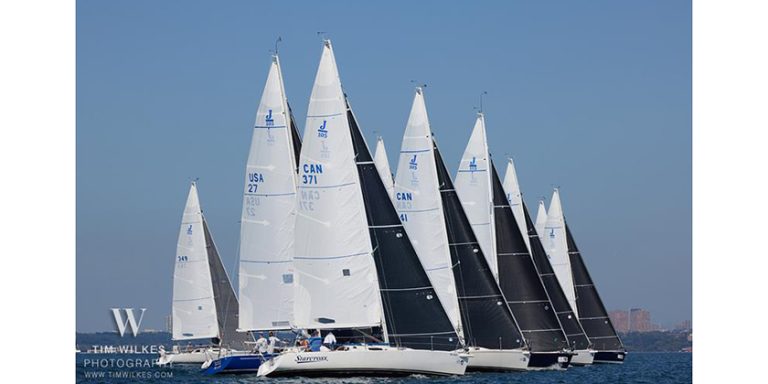Does Club Racing Have a Future?
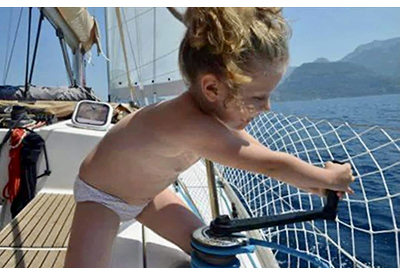
January 18, 2023
By Roger Renaud
You can‘t start them too young
Last issue Roger introduced the opportunities and issues for club racing. In the first of a two-part deeper analysis, he unpacks the reality of Wednesday nights.
Part A – Club, Culture and Education are key!
By definition, a club is an association or organization dedicated to a particular interest or activity be it a baseball club, a rowing club, or a sailing club. Members, particularly competitive ones, are the beating heart of the club. It is the membership who decides the direction and culture of a club. We are the Club! A prominent member of the Lake St Clair Sailing Community stated: – “The future of racing depends on us, all of us.” He is so right!
At a healthy club, members coach the juniors and coach and teach their fellow members. Members maintain the grounds, they run the clubhouse, and ultimately, they give up many weekends in the name of the club. For club survival, a genuine club spirit is a primary ingredient.
Aside from the sporting aspect, members might also be inclined to get involved for social reasons. The most attractive clubs are ones that offer a place as part of a family. You’re treated as a friend. Meeting new people and socialising with friends is a significant factor for taking up sailing.
A successful club racing program is one where members help each other. Race night is a reason to get together and socialize with the rest of the membership.
From my research, many shared these opinions:
- I think what makes it good is when people don’t take it too seriously and make sure it stays fun. I’ve been at clubs where one or two boats ruin it for others.
- Sitting around together after discussing what you did right or wrong and how to improve the next time.
- Club organizing food or other activities after a race to get all participants hanging out in a common area.
- I think the friendly competition and sense of togetherness makes it compelling. Hard fought on the water, hard laughter afterwards.
- While it is super competitive on the racecourse, afterwards, the skippers and crew all get together for a great night of camaraderie and sharing their experiences on the water.
- Experienced sailors always seem willing to help the newbies and while the racing is serious, it’s meant to be a fun experience.
On the flip side, a significant factor for people dropping out of our sport is also social based. If they don’t see their teammates, and other members as friends, they will not likely continue to be involved with any other club activity. If there is too much in-your-face-club-politics, participation will for sure drop-off as well. There were many responses that told of the “cliques” that were witnessed, and how this made members feel they are not welcomed, or they were not good enough; – “The elitism and smugness in this sport, especially by older sailors, is a major buzz kill”.
As prominent sailor, Case Delange, wrote on the Lake St Clair blog: – “Maybe sailboat racing needs to get back to being a kinder, friendly sport”.
Size matters…
Clubs need to invest both time and money in support of their mission, and not just give the topics lip-service. In those flourishing clubs, the Executive are typically aligned with the sailing programs. This governance model better ensures the longevity of the club programs, especially when it comes to the club racing programs. Why? Because it demonstrates a commitment to the primary mission of the club.
In the late nineties, the commodore of a prominent club in the GTA, set a direction by declaring “we will be a one-design focussed club.” The club racing activity flourished. In support, the harbour was re-arranged, where all similar one-design boats were grouped together. The Laser 28, E-22, Thunderbird 26, J24, and the C&C 25, became the predominant one-design fleets with, occupying rows down the docks, and the overly crowded dry-sail facilities. The membership on a whole backed this direction. The strong racing culture that supported the club’s direction back then continues to this day.
Weekday racing, and race management, continues to be second to none, in both people and equipment. Why? Because club racing has to truly be supported at the executive level. Here on Lake St Clair, Crescent Yacht Sailing Club come to mind as a club where the entire membership shares the same definition of what a smaller one-design focussed racing club should be.
In a smaller club, the one common element for success is finding an individual who enthusiastically “sells” the racing program. When this is the case, unfortunately one or two people do all the work. Only with a strong enthusiastic leader do these programs succeed in the longer term. It takes a commitment from the Board, and it takes a commitment from the membership. It has to be a total club commitment for any success. “Club racing” must remain front-row-center, and never be overshadowed by other club programs.
Problems with handicapping – PHRF handicapping
It is very unfortunate that many novice sailors know little about PHRF, and how boats are rated. They demonstrate little knowledge about racing a sailboat, and those elements that make a boat stay competitive. I make this statement based on the responses to my survey.
For example, it was suggested: – “an old boat with rotted ribs, once fixed, should get a penalty because the boat is potentially stiffer than before. This will make the boat go faster”. Starting elsewhere in this issue, Larry Huibers’ Sailing in Canada column should help our understanding.
It was suggested by a few respondents, that people win races, for no other reason, but because they spend money maintaining and improving the operation of their boat. They feel this is not good for the sport. They say it disadvantages those who do not have the money to spend.
The need for education
It is my opinion, some PHRF organizations and rating stations across North America, have seriously let the sailing community down, and they continue to do so. From the responses read, education will be a very positive contributor to the success of club racing. PHRF has allowed these misconceptions and conspiracy theories to foster. They have not provided the required education, at the ground level… at the club level, about PHRF handicapping versus boat maintenance.
A significant issue impedes educating sailors about PHRF, is the fact there are a variety of handicapping policies and practices out there. Each rating station has their own opinions about the handicapping of like boats, and it appears each can take their own directions. A PHRF Rating Station can basically do what they want. Herein is where the problems lie. Local sailors get confused and discouraged.
I feel that if PHRF (at the executive and national level) wants to be recognized as a viable ‘Class Association’ like all other racing classes out there, then it should be thinking about adopting a standard measurement policy and practice. This needs to be a top priority.
Last winter Sailing in Canada published a three-part article about standardizing PHRF around the great lakes. You can find these articles in the Sailing in Canada dashboard.
Sailing Clubs are failing when it comes to education…
It is my belief that the Sailing Clubs themselves have also failed the sailors, because they too have not provided the necessary classroom style training about PHRF handicapping, and about maintaining and racing a sailboat.
Tell the membership: – “Doing well in sailboat racing takes practice, boat prep, good equipment/sails, and a bit of luck.” The better crew, on a well-prepared boat, should never get penalized because they were capable of sailing a boat to its potential.
Sailing Clubs need to have seminars about racing a sailboat – how to prepare your crew, how to get around a racecourse, rules, and, seminars how to sail fast, about sail-trim and tactics… etc. There are too many novice racers who do not want to accept the learning and experience that is needed, in order for them to progress, and to start winning races.
Many sailors simply will not admit that someone else is a better sailor. It is this ego that causes a sailor to stop learning. This is the comment from a seasoned educator: – “In the meantime, I will continue to work promoting sailing/racing at all levels, encouraging new sailors to take the time to prepare their boats to the best of their abilities, and sail them as well as they can.”
To win races, we have to learn how to sail fast in both light and heavy air, flat water, or in a heavy chop. To win races, there must also be a knowledge of tactics, the racing rules, and the weather. Winning a race is not only about boat speed. “We should never stop learning”.
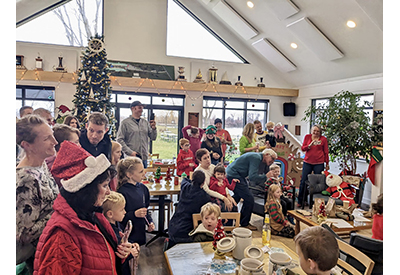 Governance
Governance
Clubs need to be healthy. The kids Santa party and other social events flow from on-the-water activity
A sailing club has, by definition, one purpose, and that is to provide programs and services for the membership which support the sport of sailing.
Over the years we’ve watched the focussed clubs flourish, and we see those other clubs, where the same group of 5 – 6 old-timers keep rotating various positions on the Board. Too often we see our sport overly dominated by the ‘older crowd’ not letting go. When this happens, the social fabric of the club breaks down.
These types of issues may be difficult to address. A few newcomers to the sailing crowd, stated in their replies, that they found these situations “intimidating”, and they were made “not to feel welcomed”.
One reader was spot-on when he made these comments:
- “Maximum limited terms for all officers. When volunteers get set in their ways, egotistical, and political, all hell breaks loose, and nobody has fun.
- Choose your model. Race club, cruising club, or social club. Be honest.
- If it is a race club, make it an excellent race club.
- If it is a cruising club, make it an excellent cruising club.
- If it is a DIY project boat club, make it an excellent DIY project boat club.
- It is no good trying to be everything to everyone.”
A few respondents also reminded us of “the importance of listening to the younger crowd”. These young sailors are the next generation.
This is a two-part article. Over 50% of the comments received focused on “getting crew”, and the various innovative ways clubs around the Great Lakes have successfully addressed this common issue. Part B will focus on attracting new people to our sport.
 Born in Windsor, Ontario, Roger moved to Toronto for work in the early 70’s where he sailed a Hobie off Cherry Beach. Eventually joining ABYC, he has owned three different Thunderbirds over the years. The Thunderbird, 8-meter, E-22, Laser 28, CC27, CC34, CC99, and the Beneteau First 36.7’s, were the other one-design fleets he raced in, each for a few years dedicated to a program. He was also involved in a significant three-year program on the NM 36, Maggie Kelly.
Born in Windsor, Ontario, Roger moved to Toronto for work in the early 70’s where he sailed a Hobie off Cherry Beach. Eventually joining ABYC, he has owned three different Thunderbirds over the years. The Thunderbird, 8-meter, E-22, Laser 28, CC27, CC34, CC99, and the Beneteau First 36.7’s, were the other one-design fleets he raced in, each for a few years dedicated to a program. He was also involved in a significant three-year program on the NM 36, Maggie Kelly.
Since returning to Essex County, he has been racing locally and in the Detroit (DYRA) PHRF divisions on his restored Pearson Flyer.

